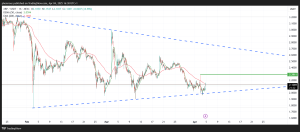However, the truth—highlighted by analyst SMQKE in a recent post on X—is that XRP has already achieved integration with SWIFT through several certified, third-party providers. These companies act as gateways between Ripple’s blockchain technology and the traditional banking infrastructure, allowing XRP to flow through the SWIFT network without needing direct affiliation.
The New Era of Interoperable Finance
SWIFT’s ongoing transition to ISO 20022 has created a new foundation for global payments. This standardized messaging framework allows for richer data, real-time interoperability, and seamless connectivity between traditional banking systems and emerging blockchain technologies.
Its complementary initiative, CBPR+ (Cross-Border Payments and Reporting Plus), extends this compatibility to cross-border payments, ensuring that institutions worldwide can communicate using a unified standard.
In parallel, SWIFT has introduced its Transaction Management Platform (TMP), shifting from legacy messaging to API-based communication. This architectural evolution enables distributed ledger technologies (DLTs), such as the XRP Ledger, to interact directly with SWIFT’s infrastructure.
For the first time, blockchain and digital assets can move natively through SWIFT-connected systems, providing a technological bridge between on-chain settlement and off-chain financial messaging.
XRP ALREADY HAS MULTIPLE ENTRY POINTS INTO THE SWIFT NETWORK — HERE’S A LIST OF THE THIRD-PARTY PROVIDERS MAKING IT POSSIBLE
Many still ask how XRP could ever reach SWIFT’s 11,000 customers.
The answer is that Ripple chose the fastest and most efficient path: deploying… pic.twitter.com/wzP2JGJpnJ
— SMQKE (@SMQKEDQG) October 4, 2025
How Ripple Enters the SWIFT Ecosystem
Rather than pursuing a headline-grabbing alliance, Ripple strategically partnered with multiple SWIFT-connected technology providers—firms already trusted by major banks for payment processing and compliance. These vendors meet ISO 20022 and CBPR+ standards and are integrated with Ripple’s tech, allowing seamless XRP transactions over SWIFT’s network.
Among the key providers identified by SMQKE are Finastra, ACI Worldwide, EastNets, TAS Group, Temenos, Volante Technologies, and CGI. Each of these firms operates at the intersection of banking infrastructure and financial messaging, making them ideal conduits for Ripple’s technology.
Finastra’s collaboration with Ripple, for instance, provides access to more than 11,000 financial institutions connected to SWIFT, allowing banks to execute XRP-based cross-border settlements while maintaining their existing SWIFT messaging setup.
Similarly, EastNets’ PaymentSafe platform bridges Ripple’s blockchain with SWIFT’s global payment infrastructure, enabling banks to settle transactions via XRP without leaving the SWIFT ecosystem. Volante Technologies, TAS Group, and Temenos have also integrated Ripple’s solutions into their payment gateways, each facilitating API-level interoperability between SWIFT and the XRP Ledger.
We are on X, follow us to connect with us :- @TimesTabloid1
— TimesTabloid (@TimesTabloid1) June 15, 2025
Integration Without Formal Partnership
This layered structure clarifies a frequent misconception: XRP’s presence in the SWIFT ecosystem does not depend on a direct partnership between Ripple and SWIFT. Instead, interoperability is achieved through these middleware providers, which translate SWIFT messages into blockchain instructions and vice versa.
As a result, XRP can function within SWIFT’s compliance framework while benefiting from the speed and liquidity of blockchain settlement.
The distributed integration model aligns with the evolving nature of global finance. Rather than replacing legacy networks, blockchain solutions like RippleNet and the XRP Ledger are being woven into existing infrastructures—quietly but effectively—through certified intermediaries that already hold SWIFT accreditation.
A Silent Revolution in Cross-Border Settlement
The implications of this development are profound. Ripple’s technology is no longer confined to theoretical pilot programs; it is embedded within the operational layers of global payment gateways that connect to SWIFT. As institutions upgrade to ISO 20022 and explore tokenized settlement, these gateways provide immediate access to XRP liquidity and on-chain efficiency.
In essence, what retail investors have long anticipated—a pathway for XRP to flow within SWIFT’s network—has already materialized. SMQKE’s analysis reveals that Ripple’s approach was not to compete with SWIFT, but to integrate beneath it, leveraging compliant intermediaries to bridge both worlds.
The result is a quietly unfolding transformation in cross-border payments—one in which XRP already has multiple, active entry points into the SWIFT network.
Disclaimer: This content is meant to inform and should not be considered financial advice. The views expressed in this article may include the author’s personal opinions and do not represent BitcoinLinux’s opinion. Readers are urged to do in-depth research before making any investment decisions. Any action taken by the reader is strictly at their own risk. BitcoinLinux is not responsible for any financial losses.
Follow us on Twitter, Facebook, Telegram, and Google News
The post XRP Already Has Multiple Entry Points Into the SWIFT Network appeared first on BitcoinLinux.



